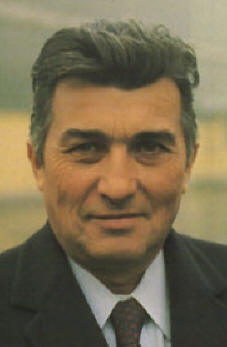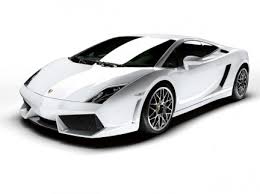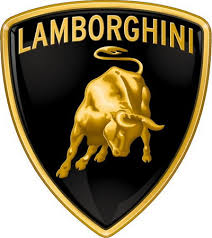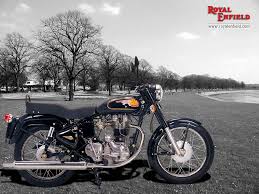 is POLLUTION. In this article there are some of the facts that reveal the bad effects of pollution in INDIA and the causes for the pollution in INDIA.
is POLLUTION. In this article there are some of the facts that reveal the bad effects of pollution in INDIA and the causes for the pollution in INDIA.
Air pollution - Courtesy Nasa
The environmental problems in India are growing rapidly. The increasing economic development and a rapidly growing population that has taken the country from 300 million people in 1947 to more than one billion people today is putting a strain on the environment, infrastructure, and the country’s natural resources. Industrial pollution, soil erosion, deforestation, rapid industrialization, urbanization, and land degradation are all worsening problems. Over exploitation of the country's resources be it land or water and the industrialization process has resulted environmental degradation of resources. Environmental pollution is one of the most serious problems facing humanity and other life forms on our planet today.
India's per capita carbon dioxide emissions were roughly 3,000 pounds (1,360 kilograms) in 2007, according to the study. That's small compared to China and the U.S., with 10,500 pounds (4,763 kilograms) and 42,500 pounds (19,278 kilograms) respectively that year. The study said that the European Union and Russia also have more emissions than India.
India has been ranked as seventh most environmentally hazardous country in the world by a new ranking released recently. The study is based on evaluation of “absolute” environment impact of 179 countries, whose data was available and has been done by researchers in Harvard, Princeton, Adelaide University and University of Singapore 0n January 12, 2011.
India’s environmental problems are exacerbated by its heavy reliance on coal for power generation. "More than 80 per cent of energy is produced from coal, a fuel that emits a high amount of carbon and greenhouse gases." said Bikash. According to him, coal pollution kills more than 300,000 people every year.
River water Pollution
Contaminated and polluted water now kills more people than all forms of violence including wars, according to a United Nations report released on March 22, 2010 on World Water Day that calls for turning unsanitary wastewater into an environmentally safe economic resource. According to the report -- titled "Sick Water?" -- 90 percent of wastewater discharged daily in developing countries is untreated, contributing to the deaths of some 2.2 million people a year from diarrheal diseases caused by unsafe drinking water and poor hygiene. At least 1.8 million children youngerthan 5 die every year from water-related diseases.
Fully 80 percent of urban waste in India ends up in the country's rivers, and unchecked urban growth across the country combined with poor government oversight means the problem is only getting worse. A growing number of bodies of water in India are unfit for human use, and in the River Ganga, holy to the country's 82 percent Hindu majority, is dying slowly due to unchecked pollution.
New Delhi's body of water is little more than a flowing garbage dump, with fully 57 percent of the city's waste finding its way to the Yamuna. It is that three billion liters of waste are pumped into Delhi's Yamuna (River Yamuna) each day. Only 55 percent of the 15 million Delhi residents are connected to the city's sewage system. The remainder flush their bath water, waste water and just about everything else down pipes and into drains, most of them empty into the Yamuna. According to the Centre for Science and Environment, between 75 and 80 percent of the river's pollution is the result of raw sewage. Combined with industrial runoff, the garbage thrown into the river and it totals over 3 billion liters of waste per day. Nearly 20 billion rupees, or almost US $500 million, has been spent on various clean up efforts.
Groundwater exploitation
Groundwater exploitation is a serious matter of concern today and legislations and policy measures taken till date, by the state governments (water is a state subject) have not had the desired effect on the situation.
Groundwater Quality and Pollution is most alarming pollution hazards in India. On April 01, 2010 at least 18 babies in several hamlets of Bihar’s Bhojpur district have been born blind in the past three months because their families consume groundwater containing alarming levels of arsenic, confirmed by Bihar’s Health Minister Nand Kishore Yadav on Wednesday, 31st March 2010 confirmed the cases of blindness in newborns in arsenic- affected blocks of the district.
According to the World Health Organization on World Water Day 2011, on March 22, 2011 each year, an estimated four billion people get sick with diarrhea as a result of drinking unsafe water, inadequate sanitation, and poor hygiene. Nearly two million people die from diarrhea each year, and many of them children under the age of five, poor, and living in the developing world.
Plastic Pollution
Plastic bags, plastic thin sheets and plastic waste is also a major source of pollution. A division bench of Allahabad High Court, comprising Justice Ashok Bhushan and Justice Arun Tandon, in May 03, 2010 had directed the Ganga Basin Authority and the state government to take appropriate action to ban the use of polythene in the vicinity of Ganga in the entire state. Also Plastic Bag Pollution in the country is the biggest hazards. On August 2, 2010, seeking to know whether a fine should be imposed on paan masala or gutkha packet manufacturers for polluting and choking the drainage systems, the Supreme Court has directed the Union government to file its reply in six weeks.
From January 20, 2011 sale of plastic or polythene bags has been banned in the vicinity of rivers or any other water body after Uttar Pradesh Governor B L Joshi gave his assent to an ordinance in this regard. "The Governor has given his assent to UP Plastic and Bio-Degradable Garbage and Waste (Use and Disposal) Ordinance which makes areas around river and water bodies no-polythene zone," he said.
Pollution due to Mining
New Delhi-based Center for Science and Environment (CSE) on December 29, 2007 said mining was causing displacement, pollution, forest degradation and social unrest. According to the Centre for Science and Environment ( CSE) report the top 50 mineral producing districts, as many as 34 fall under the 150 most backward districts identified in the country.
The CSE report has made extensive analysis of environment degradation and pollution due to mining, wherein it has said, in 2005-06 alone 1.6 billion tonnes of waste and overburden from coal, iron ore, limestone and bauxite have added to environment pollution. With the annual growth of mining at 10.7 per cent and 500-odd mines awaiting approval of the Centre, the pollution would increase manifold in the coming years.
The mines of Mahanadi Coal Fields and NTPC draw about 25 Cr litres of water per day from the River Brahmani and in return they release thousands of gallons of waste water, which contains obnoxious substances like Ash, Oil, Heavy Metals, Grease, Fluorides, Phosphorus, Ammonia, Urea and Sulphuric Acid, into the River Nandira (A tributary of River Brahmani). The effluents from chlorine plant cause chloride and sodium toxicity to the river Rushikulya – the lifeline of southern Orissa. The Phosphoric Fertilizer Industry discharges effluent containing Nitric, Sulphuric and Phosphoric acids into river Mahanadi.
The Supreme Court on February 25, 2011 ordered a probe by its committee into alleged illegal mining in Bellary and other forest areas of Karnataka. A bench headed by Chief Justice S.H. Kapadia asked the apex
court-appointed Central Empowered Committee to conduct the probe and file its report within six weeks.The court passed the order on an oral mention made by advocate Prashant Bhushan who said that the report of the Karnataka Lokayukta clearly stated that mining activities were being carried not only illegally but also stretched to areas categorised as forest land.
Despite stone mining’s links to several occupational diseases such as pneumoconiosis, silicosis, tuberculosis, asbestosis and asthma, abject poverty keeps driving villagers in many parts of the Rajasthan state to illegal mining. Rajasthan is the largest producer of dimensional stones in the country. The state produces 5 crore tonnes a year.
An aluminum refinery in Orissa blithely continues to pollute the surrounding villages, despite the recommendations of the Supreme Court's Central Empowered Committee that it be closed since it poses environmental and health hazards. Rengopalli in the east and west cells of the Red Mud pond built for the refinery's alkaline waste disposal. Red Mud, which is the final waste product from bauxite. In the currently operational west cell, a ton of toxic waste is dumped for every ton of alumina produced in the refinery
The most polluted places in India
Vapi in Gujarat and Sukinda in Orrisa is among the worlds top 10 most polluted places, according to the Blacksmith Institute, a New York-based nonprofit group.
Vapi : Potentially affected people: 71,000 -Pollutants: Chemicals and heavy metals due to its Industrial estates.
Sukinda: Potentially affected people: 2,600,000. -Pollutants: Hexavalent chromium due to its Chromite mines.
The most polluted cities in India
As many as 51 Indian cities have extremely high air pollution, Patna, Lucknow, Raipur, Faridabad and Ahmedabad topping the list. An environment and forest ministry report, released on September 14, 2007 has identified 51 cities that do not meet the prescribed Respirable Particulate Matter (RSPM) levels, specified under the National Ambient Air Quality Standards (NAAQS). In 2005, an Environmental Sustainability Index (ESI) placed India at 101st position among 146 countries.
Taking a cue from the finding, the Central Pollution Control Board (CPCB) formulated NAAQS and checked the air quality, which led to the revelation about air quality in leading cities.
According to the report, Gobindgarh in Punjab is the most polluted city, and Ludhiana, Raipur and Lucknow hold the next three positions. Faridabad on the outskirt of Delhi is the 10th most polluted city, followed by Agra, the city of Taj Mahal. Ahmedabad is placed 12th, Indore 16th, Delhi 22nd, Kolkata 25th, Mumbai 40th, Hyderabad 44th and Bangalore stands at 46th in the list. The Orissa town of Angul, home to National Aluminium Company (NALCO), is the 50th polluted city of the country.






